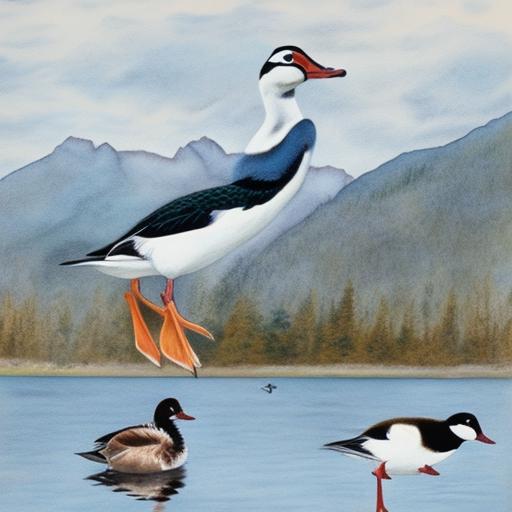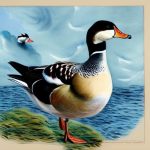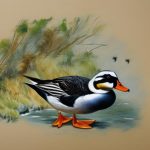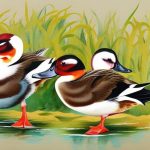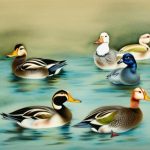Alaska is home to a variety of duck breeds that have adapted to the unique climate and environment of the region. These breeds have been developed over time to thrive in the cold temperatures and harsh conditions of the Alaskan wilderness. From the Mallard Duck to the American Pekin Duck, each breed has its own distinct characteristics and qualities that make it well-suited for life in Alaska. These ducks play an important role in the ecosystem, providing both food and entertainment for Alaskans and visitors alike. In this article, we will explore some of the most popular duck breeds in Alaska, their origins, characteristics, and the role they play in the state’s culture and economy.
Key Takeaways
- Alaska is home to several unique duck breeds that have adapted to the harsh climate and rugged terrain of the region.
- The Mallard duck is one of the most common and recognizable duck breeds in Alaska, known for its vibrant green head and distinctive quacking sound.
- The American Pekin duck is a popular breed in Alaska, prized for its large size, white plumage, and friendly disposition.
- The Black East Indie duck is a small, sleek breed with iridescent black feathers, known for its excellent foraging abilities and adaptability to cold climates.
- The Buff duck is a hardy breed with a calm temperament and beautiful buff-colored plumage, making it a popular choice for backyard duck enthusiasts in Alaska.
- The Khaki Campbell duck is a prolific egg layer and excellent forager, making it a valuable breed for sustainable egg production in Alaska.
- Conservation efforts are important to preserve the genetic diversity and unique traits of Alaska duck breeds, ensuring their continued survival and contribution to the region’s ecosystem.
The Mallard Duck
The Mallard Duck is one of the most recognizable and widespread duck breeds in the world, and it is no exception in Alaska. Known for its distinctive green head and bright orange bill, the Mallard is a common sight in ponds, lakes, and rivers throughout the state. Mallards are highly adaptable and can be found in a wide range of habitats, from urban parks to remote wilderness areas. They are also popular among hunters for their delicious meat and challenging hunting experience. In addition to their hunting appeal, Mallards are also a favorite subject for wildlife photographers and birdwatchers due to their striking plumage and graceful behavior. With their ability to thrive in diverse environments and their cultural significance, Mallard Ducks are an integral part of Alaska’s natural landscape.
The Mallard Duck is a dabbling duck, meaning it feeds by tipping forward in the water to reach aquatic plants, insects, and small fish. They are also known for their distinctive quacking call, which is a familiar sound in wetland areas throughout Alaska. Mallards are highly social birds and can often be seen in large flocks during migration season. They are also known for their courtship displays, with males performing elaborate rituals to attract females. Mallards are also excellent parents, with females leading their ducklings to water shortly after hatching. Overall, the Mallard Duck is a versatile and resilient breed that has made a significant impact on Alaska’s natural environment and cultural heritage.
The American Pekin Duck
The American Pekin Duck is a domesticated breed that has become popular in Alaska for its meat and egg production. Originally bred in China, Pekin Ducks were brought to the United States in the 19th century and quickly became a staple of American farms. Known for their large size, white plumage, and friendly disposition, Pekin Ducks are well-suited for life in Alaska’s cold climate. They are also highly adaptable and can thrive in a variety of environments, making them a popular choice for small-scale farmers and homesteaders in the state. Pekin Ducks are also valued for their high egg production, with females laying large white eggs that are prized for their rich flavor and nutritional value.
In addition to their practical uses, Pekin Ducks are also popular as pets due to their gentle nature and charming appearance. They are known for their distinctive orange bills and legs, as well as their endearing waddle as they walk. Pekin Ducks are also highly sociable animals and enjoy the company of other ducks, making them a popular choice for backyard flocks in Alaska. With their dual-purpose nature and friendly demeanor, Pekin Ducks have become an important part of Alaska’s agricultural landscape and provide valuable resources for local communities.
The Black East Indie Duck
The Black East Indie Duck is a unique breed that has gained popularity in Alaska for its striking appearance and practical qualities. Known for its iridescent black plumage and small size, the Black East Indie Duck is a favorite among backyard poultry enthusiasts and small-scale farmers in the state. Originally from Southeast Asia, these ducks were brought to Europe in the 19th century and eventually made their way to North America. In Alaska, they have become known for their ability to thrive in cold climates and their excellent foraging skills. Black East Indie Ducks are also valued for their high egg production, with females laying small but flavorful eggs that are prized by chefs and home cooks alike.
In addition to their practical uses, Black East Indie Ducks are also popular for their unique appearance and charming personality. They are known for their quiet nature and friendly demeanor, making them a popular choice for families and individuals looking to raise ducks as pets. These ducks are also highly adaptable and can be raised in a variety of environments, from urban backyards to rural homesteads. With their distinctive looks and practical qualities, Black East Indie Ducks have become an important part of Alaska’s diverse poultry community.
The Buff Duck
The Buff Duck is a domesticated breed that has gained popularity in Alaska for its gentle nature and practical qualities. Known for its soft buff-colored plumage and friendly disposition, Buff Ducks are a favorite among small-scale farmers and backyard poultry enthusiasts in the state. Originally developed in England, these ducks were brought to North America in the 20th century and quickly became popular for their excellent egg production and calm temperament. In Alaska, Buff Ducks have become known for their ability to thrive in cold climates and their adaptability to a variety of environments.
Buff Ducks are also valued for their high egg production, with females laying large white eggs that are prized for their rich flavor and nutritional value. They are also known for their excellent foraging skills and ability to thrive on a natural diet of insects, plants, and grains. In addition to their practical uses, Buff Ducks are also popular as pets due to their gentle nature and charming appearance. They are known for their distinctive buff-colored plumage and endearing waddle as they walk. With their dual-purpose nature and friendly demeanor, Buff Ducks have become an important part of Alaska’s agricultural landscape and provide valuable resources for local communities.
The Khaki Campbell Duck
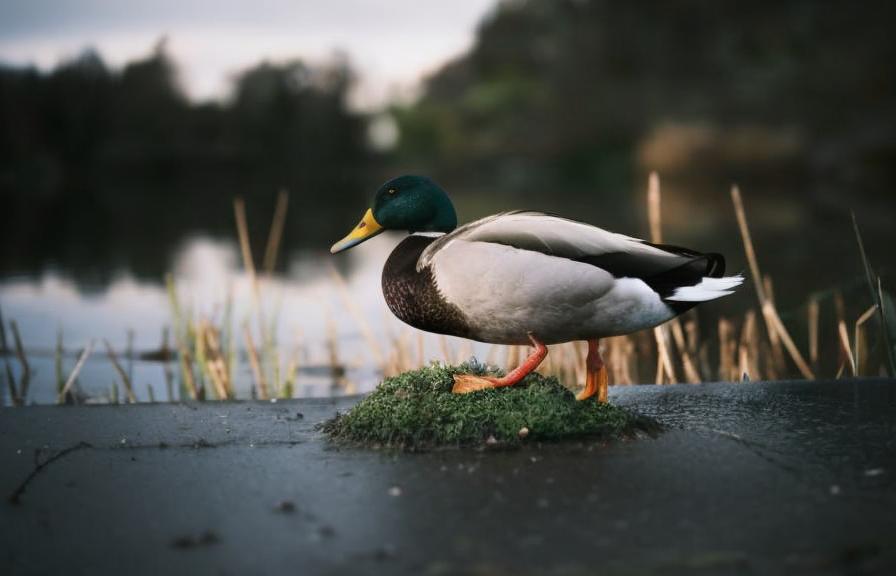
The Khaki Campbell Duck is a domesticated breed that has gained popularity in Alaska for its excellent egg production and adaptable nature. Originally developed in England by Mrs. Adele Campbell in the early 20th century, Khaki Campbell Ducks quickly became known for their high egg production and calm temperament. In Alaska, they have become popular among small-scale farmers and homesteaders for their ability to thrive in cold climates and their adaptability to a variety of environments. Khaki Campbell Ducks are also valued for their high egg production, with females laying large white eggs that are prized for their rich flavor and nutritional value.
In addition to their practical uses, Khaki Campbell Ducks are also popular as pets due to their gentle nature and charming appearance. They are known for their distinctive khaki-colored plumage and endearing waddle as they walk. Khaki Campbell Ducks are also highly sociable animals and enjoy the company of other ducks, making them a popular choice for backyard flocks in Alaska. With their dual-purpose nature and friendly demeanor, Khaki Campbell Ducks have become an important part of Alaska’s agricultural landscape and provide valuable resources for local communities.
Conclusion and Conservation of Alaska Duck Breeds
In conclusion, Alaska is home to a diverse array of duck breeds that have adapted to thrive in the unique climate and environment of the region. From the iconic Mallard Duck to the practical American Pekin Duck, each breed plays an important role in the state’s culture, economy, and natural landscape. These ducks provide valuable resources such as meat, eggs, feathers, and entertainment while also contributing to the overall health of the ecosystem through their natural behaviors such as foraging and habitat maintenance.
Conservation efforts are crucial to ensure the continued success of these duck breeds in Alaska. By preserving natural habitats, promoting responsible breeding practices, and supporting sustainable farming methods, we can help protect these valuable species for future generations to enjoy. Additionally, education about the importance of these duck breeds in Alaska’s heritage can help raise awareness about the need for conservation efforts. By working together to protect these unique duck breeds, we can ensure that they continue to thrive in Alaska’s wilderness for years to come.
If you’re interested in learning more about breeding ducks, you might also want to check out an article on PoultryWizard about the mating season for ducks. Understanding the mating season is crucial for successful breeding and raising of duck breeds. You can find the article here.
FAQs
What are the different duck breeds found in Alaska?
There are several duck breeds found in Alaska, including the Mallard, Northern Pintail, American Wigeon, Green-winged Teal, and the Greater Scaup.
What are the characteristics of these duck breeds?
Each duck breed has its own unique characteristics, including size, coloration, and behavior. For example, the Mallard is known for its iridescent green head and bright orange bill, while the Northern Pintail has a long, elegant neck and pointed tail feathers.
How do these duck breeds adapt to the Alaskan environment?
Alaskan duck breeds have adapted to the harsh environment by developing thick, insulating feathers and a layer of fat to keep them warm in cold temperatures. They also have specialized bills for feeding on aquatic vegetation and small invertebrates found in Alaskan wetlands.
What is the role of these duck breeds in the Alaskan ecosystem?
Duck breeds in Alaska play a crucial role in the ecosystem by helping to control insect populations, dispersing seeds, and providing food for predators such as eagles and foxes. They also contribute to the overall biodiversity of the region.
Are these duck breeds protected in Alaska?
Many duck breeds in Alaska are protected under state and federal regulations to ensure their conservation and sustainable management. Hunting seasons and bag limits are established to help maintain healthy populations of these species.
Meet Walter, the feathered-friend fanatic of Florida! Nestled in the sunshine state, Walter struts through life with his feathered companions, clucking his way to happiness. With a coop that’s fancier than a five-star hotel, he’s the Don Juan of the chicken world. When he’s not teaching his hens to do the cha-cha, you’ll find him in a heated debate with his prized rooster, Sir Clucks-a-Lot. Walter’s poultry passion is no yolk; he’s the sunny-side-up guy you never knew you needed in your flock of friends!

